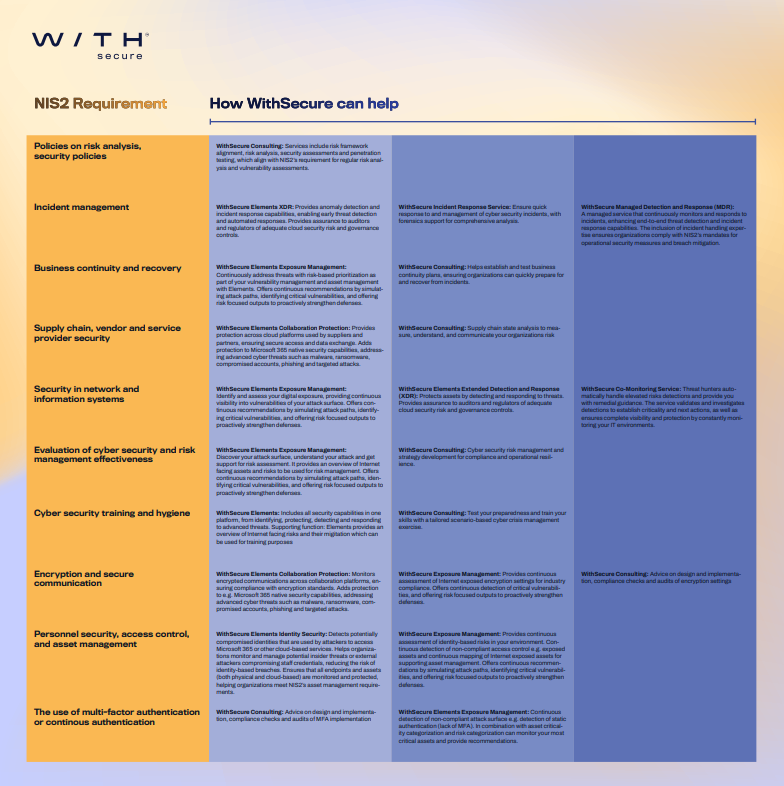Congrats, Europe!
The NIS2 Directive has arrived, making business in Europe more cyber resilient.

Let’s get secure. Take action. Now.
NIS2 – The new Network and Information Security directive – is here, paving the way for stronger digital trust, confidence, and equity in Europe.
From continuous monitoring and pre-emptive protection to detection and response capabilities, NIS2 guides and directs organizations to stay digitally safer, competitive, and ahead of cyber threats.
WithSecure is your European partner for NIS2 compliance. Our technologies and co-security expertise are compliant with NIS2 by design.
Who is impacted?
Important entities
These are typically organizations employing between 50 and 250 people, operating in important but non-critical sectors like:
- Postal services
- Waste management
- Chemicals
- Research
- Foods Manufacturing
- Digital Providers
Essential entities
The most critical companies in the EU. They typically employ more than 250 people and operate in the following sectors:
- Energy
- Transport
- Finance
- Public Administration
- Health
- Space
- Water Supply
- Digital infrastructure
Get NIS2 compliant with us
Fill in your details and we’ll get in touch.
Related content
Disclamer: The content presented in this website is designed for educational and informational purposes exclusively. It is not meant to replace professional advice or any other legal services. WithSecure and its affiliates do not provide any guarantees or warranties regarding the accuracy or completeness of the information provided in the website. Any reliance you place on such information is therefore strictly at your own risk
